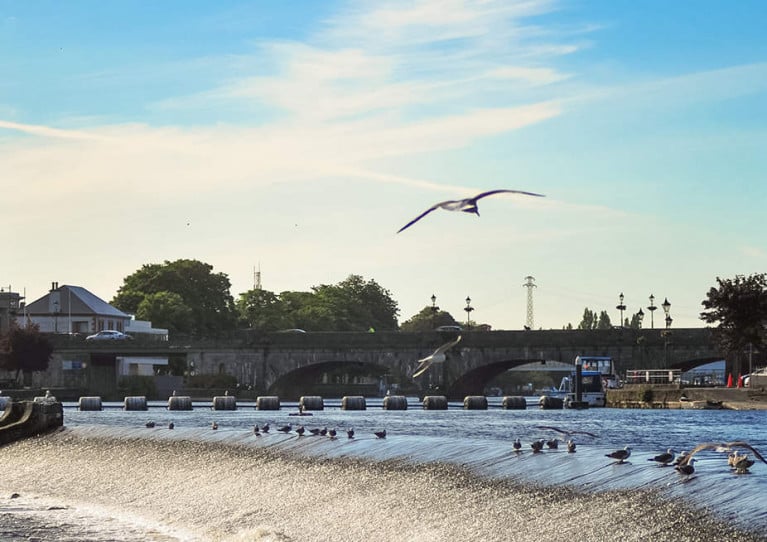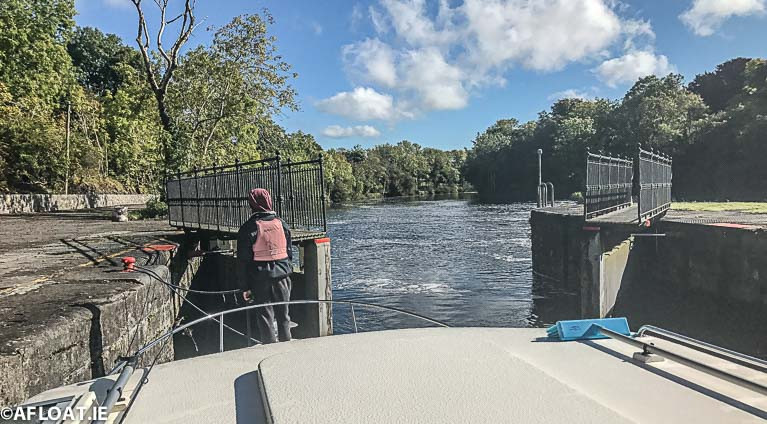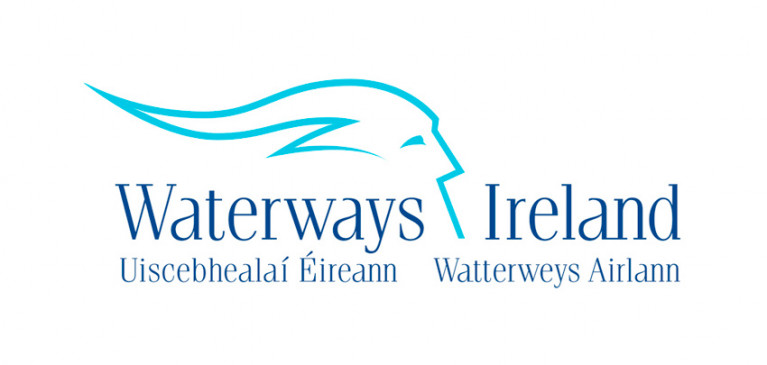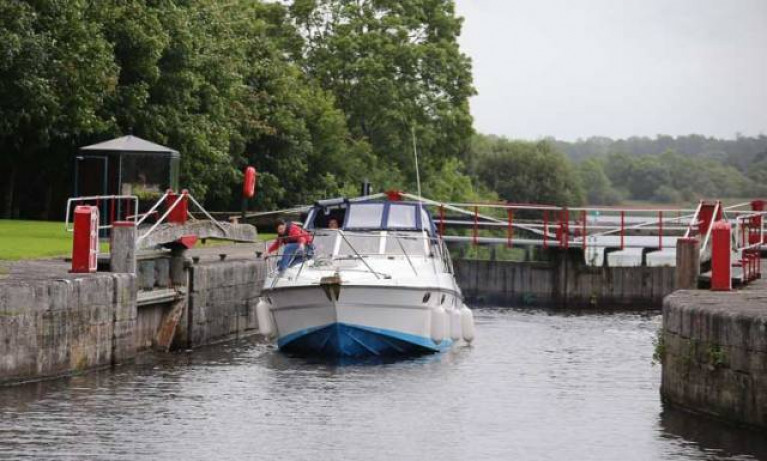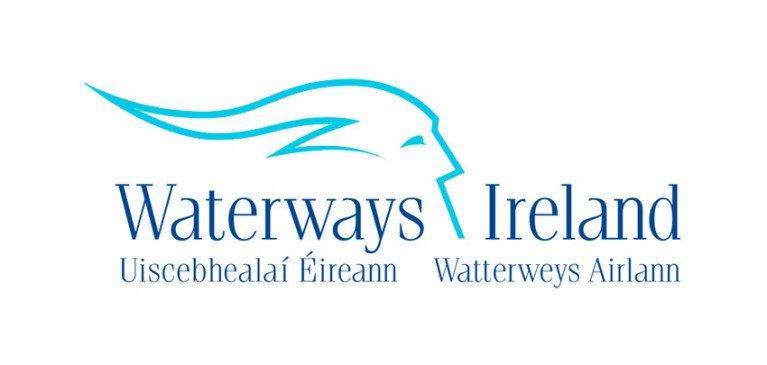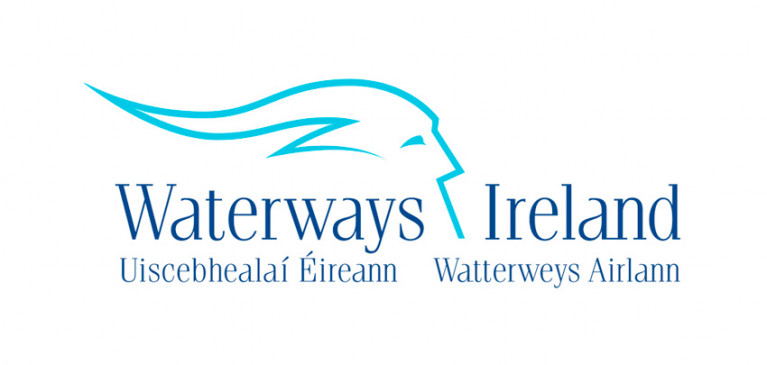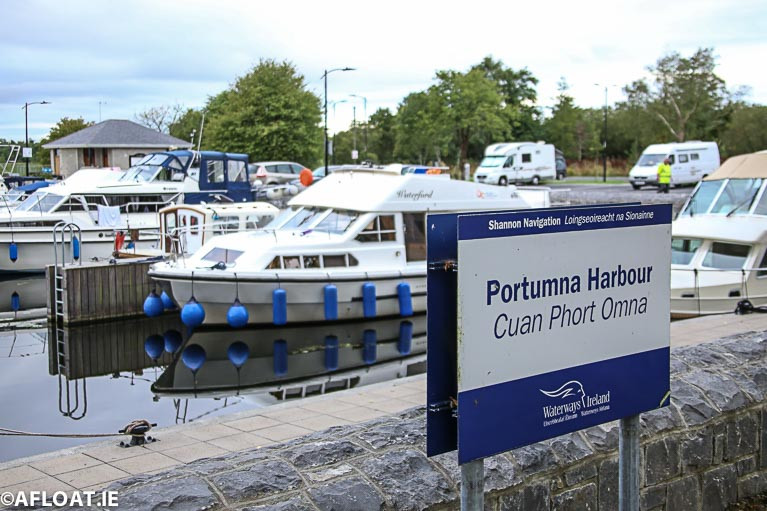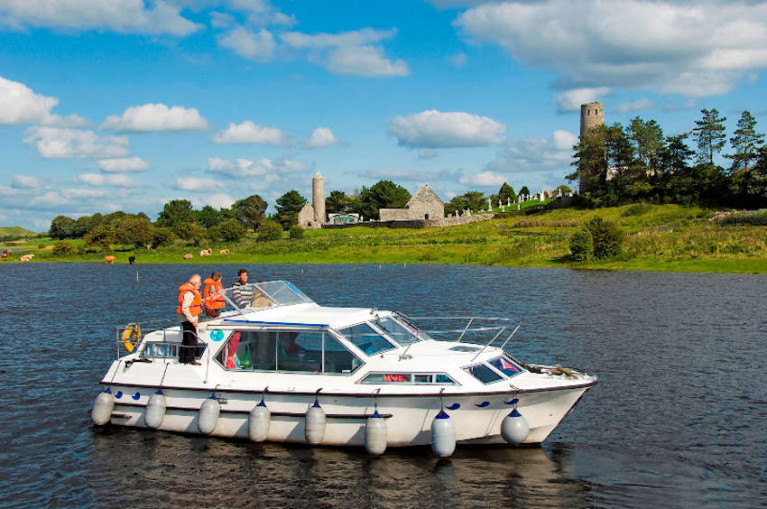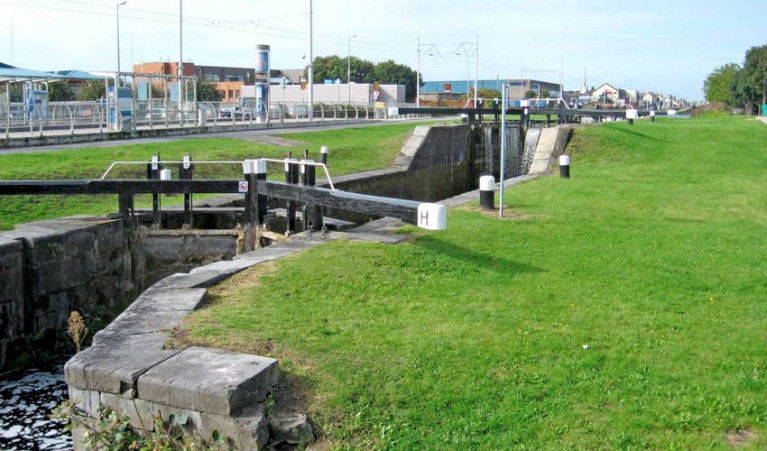Displaying items by tag: Waterways Ireland
Waterways Ireland Announced Closure Of Locks To Boat Traffic & Restricted Use Of Towpaths
Waterways Ireland advises all masters of vessels and users of Ireland’s inland waterways that the following closures are in place as of midnight last night, Monday 30 March:
- All locks on all navigations are closed until further notice.
- All service blocks are closed until further notice.
- The Winter Mooring period on the Shannon Navigation and Shannon Erne Waterway has been extended until Thursday 30 April. There will be no additional cost for this extension.
Waterways Ireland is encouraging all users of vessels on its navigations not to take part in any activity on the water in order to comply with the directions of both the Irish and British Governments.
Towpaths remain open but Waterways Ireland is encouraging locals who live in their vicinity to use them in accordance with Government guidelines for brief physical exercise, within 2km of their home, always observing social distancing protocols.
Where towpaths are likely to be busy, users are asked to restrict use, where possible, and only use those towpaths which are local, quiet and largely free of moored vessels.
Waterways Ireland confirms that operational staff, water patrollers and lock keepers will continue to undertake essential management of water levels, and any emergency works that may arise, under strict social distancing protocols.
In a statement, Waterways Ireland said: “We are aware of the potential impacts for the community of these decisions, and the difficulties this may present. At this time we would normally see the season kicking off and people de-winterising their craft and finishing off maintenance to be ready to get out on the water.
“These measures are being taken to support the national effort in keeping people safe, protecting our staff, colleagues, partners and everyone who visits, or lives on and around our canals and river navigations. We will continually review such measures in light of direction and advice from Government and health professionals and any decisions on service provision will be communicated.”
In the meantime, work continues on Waterways Ireland’s Heritage Plan 2016-2020, as well as the cross-border body’s Learning Zone online portal to assist families home schooling. Waterways Ireland can be contacted by email at [email protected] or by phone.
Access to Waterways Ireland Navigations & Availability of Services - Covid-19 Measures
Waterways Ireland advises all Masters of vessels and water users of the following access to navigations and availability of services until further notice:
- All service blocks are closed until further notice (Ref MN 23 of 2020)
- Water, electricity and pump outs are being re-connected – this is an evolving process as flood levels recede and resources allow (Ref MN 21 of 2020).
- Lock & bridge passage is available on the Shannon Navigation from 9.00 am to 12.30 on weekdays and 10.00 am to 12.30 pm on Sundays – where possible please advise lock keeper in advance (Ref MN 21 of 2020).
- As the Waterway Patrollers on the Shannon-Erne Waterway will not be at work to provide support to boaters, the lock operation systems will be switched off. Vessels will therefore not be able to make any lock passages.
- The Grand Canal, Royal Canal and the Barrow Navigational locks will be operating under reduced hours of opening.
- Boat passage in and out of Dublin is postponed until further notice (Ref MN 26 of 2020).
- There are no restrictions on the Erne Navigation.
- As the lock-keepers on Lower Bann will not be at work, vessels will not be able to pass through the locks on the Lower Bann.
- The Winter Mooring period on the Shannon Navigation and Shannon Erne Waterway has been extended until 30 April 2020. There will be no additional cost for this extension (Ref MN 114 of 2019).
The network of canals, towpaths, docks and river navigations managed by Waterways Ireland remain open, but we are strongly encouraging people to stay local, and strictly observe social distancing measures. We are asking our users not to congregate, to keep moving, and allow ample space for others to pass in accordance with social distancing.
Waterways Ireland is encouraging all Masters of vessels and water users on all navigations to continue to follow the guidelines which have been provided by the health authorities.
Waterways Ireland thanks all vessel owners and operators for their co-operation in relation to this matter.
Waterways Ireland Suspends All Passage In & Out Of Dublin On Royal & Grand Canals Until Further Notice
Waterways Ireland has issued notice to masters and owners of vessels that boat passage into or out of Dublin on the Grand Canal and Royal Canal will be postponed until further notice.
This postponement also applies to bookings for Newcomen Bridge passage on the Royal Canal.
The cross-border body for Ireland’s inland waterways adds that navigations elsewhere are generally remaining open for boats.
Albert Lock and the Jamestown Canal on the Shannon Navigation recently reopened after lock gate replacement works and the easing of flooding issues.
Albert Lock & Jamestown Canal Reopen On Shannon Navigation
Waterways Ireland advises masters and owners of vessels on the Shannon Navigation that Albert Lock has been reopened to navigation following successful replacement of lock gates.
In addition, the Jamestown Canal in Co Roscommon where the lock is located has also been reopened to navigation following a lowering of flood levels.
All other inland waterways facilities currently closed following on from the recent and ongoing flood event will remain closed until further notice.
Flood-Hit Facilities Remain Closed, Says Waterways Ireland
Waterways Ireland advises all masters of vessels and water users that inland waterways facilities that are currently closed following on from the recent and ongoing flood event will remain closed until further notice.
The locks and bridge opening times on the Shannon Navigation will remain at winter opening times until Friday 29 March. Lock and bridge opening times will remain as weekdays from 9am to 12.30pm and Sundays from 10am to 12.30pm.
Waterways Ireland is also encouraging all masters of vessels and water users on all navigations to continue to follow the guidelines which have been provided by the health authorities regarding the COVID-19 outbreak.
In other news, the Green E Buoy at Goat Island on Lough Derg is now back on station.
Waterways Ireland advises all masters of vessels and water users that the flood levels are receding on the Shannon, Erne, Barrow and Lower Bann inland waterways.
Operations staff are now preparing the jetties, quays, slipways and facilities for reactivation as the floods recede.
It is anticipated that it will take up to three weeks for all jetties, quays, slipways and facilities to be fully operational.
Masters of vessels and water users should be aware that surfaces may be slippery, access to jetties can be difficult as gangways and pontoons are elevated, and flood damage may be encountered in some locations.
All should proceed with additional caution while the clean-up work is ongoing.
Waterways Ireland Urged to Remember Farmers & Floods as it Prepares Tourism Masterplan for Shannon
Waterways Ireland has been urged to work with farmers who are facing serious flooding on the Shannon, as the agency initiates a new tourism masterplan for the river.
IFA Connacht chair Pat Murphy said that it would be a “win, win” for everyone if the State agency recognised that management of the river extended beyond the tourist market.
He was responding to yesterday’s opening of public consultation by Waterways Ireland on a new Shannon draft tourism masterplan and associated environmental report.
Waterways Ireland, Fáilte Ireland and ten local authorities are involved in the plan, stating it aims to “ reposition the combined Shannon Navigation and Shannon-Erne waterway as a key tourism destination within Ireland’s Hidden Heartlands, identifying world-class visitor experiences based on the region’s natural and cultural assets”.
The Shannon Tourism Masterplan sets out a bold and integrated framework for sustainable tourism development along the Shannon and Shannon Erne,”it says, and the public consultation is one stage in an 18-month procedure.
The draft was commissioned from SLR Consulting and partners, and consultation will be held in Northern Ireland also, with a closing date of April 22nd.
“Once the public consultation is complete, submissions will be reviewed and a final draft of the document issued,” Waterways Ireland said.
Mr Murphy said that the IFA respected Waterways Ireland’s role in tourism, and has no issue with it, but emphasised that repeated flooding of the river is a serious issue for farmers and residents along its banks.
“We call for one single authority to be responsible for Shannon management - and to be held responsible,” Mr Murphy said.
“We are not being listened to by State authorities, yet we have been calling for this for several decades,” Mr Murphy.
The IFA Connacht chair and Ardrahan farmer said he concurred with Mid-Shannon flood relief group chairman Michael Silke.
Mr Silke, whose own beef and sheep farm near Banagher on the Galway-Offaly border has been seriously flooded, said Waterways Ireland, the ESB and the Office of Public Works need to accept the reality of a “crisis”.
He said the agencies have to work together and said this has to be an absolute priority for a new government.
“Outgoing Minister of State for the OPW Kevin “Boxer” Moran did his best, but this has to come from the top,” Mr Silke said.
Mr Silke has proposed that the river could be naturally diverted onto bogland which could provide a natural sponge, while several pinch points between Athlone and Meelick could alleviate flooding.
Mr Murphy said the IFA would not like to see farmland flooded “ “but if bogs can be flooded, that could be an answer”, he said.
“Individual farmers are really suffering, and Athlone and Carrick on Shannon are at risk far more regularly, as it the environment, birds and wildlife,” Mr Murphy said.
Mr Murphy has already expressed serious concern about the mental health of some affected farmers. Some landowners have experienced flooding up to six times in the last 25 years, having been told back in the floods of 2009 that it was a “one in a hundred-year event”.
“All they really want is a small little bit of hope,” he said.
The Waterways Ireland masterplan can be viewed here
Waterways Ireland has announced the opening of a public consultation on the Draft Shannon Tourism Masterplan and Environmental Report today, Wednesday 4 March.
The consultation documents will be available to the public both online and in the 10 county council offices along the Shannon and Shannon-Erne inland waterway corridors, and the consultation will remain open until Wednesday 22 April at 4pm.
The list of documents available to view are an Executive Summary, the draft Shannon Tourism Masterplan, a baseline study for the Masterplan, the Environmental Report, and AA Screen Report and Natura Impact Report.
Submissions can be made by completing an online survey. Surveys are also available at the host locations listed on the Waterways Ireland website and can be posted to Waterways Ireland’s Western Regional Office in Scariff, Co Clare.
The public consultation is also taking place in Northern Ireland, with documents available to view in the Waterways Ireland headquarters in Enniskillen. Relevant additional links include the NI Environmental Report and Habitats Regulations Assessment.
This consultation is the next stage in an 18-month process to reposition the combined Shannon Navigation and Shannon-Erne Waterway as a key tourism destination within Ireland’s Hidden Heartlands, identifying world class visitor experiences based on the region’s natural and cultural assets.
The Shannon Tourism Masterplan sets out “a bold and integrated framework for sustainable tourism development along the Shannon and Shannon-Erne”, Waterways Ireland says.
SLR Consulting and partners were commissioned to develop this Tourism Masterplan for the Shannon by Waterways Ireland in association with Fáilte Ireland and with the support of the 10 local authorities adjoining the River Shannon and Shannon Erne Waterway.
Once the public consultation is complete, submissions will be reviewed and a final draft of the document issued.
Green E Buoy At Goat Island On Lough Derg Is Off Station
Waterways Ireland advises all masters of vessels and water users that the Green E Buoy buoy at Goat Island on Lough Derg is off station, and to proceed with additional caution in the vicinity of the island.
Waterways Ireland has announced that works to repair a broken sewer line in the Grand Canal at Inchicore will not be completed until the end of May.
Navigation between Locks 1 and 2 will remain closed after the incident last summer which saw the partial collapse of a trunk sewer at Suir Road, west of St James’ Hospital in the city.
The cross-border body for Ireland’s inland waterways added: “As the works to the sewer are dependent on a number of factors and are outside of Waterways Ireland control, this date cannot yet be confirmed but updates will be issued when available.”
Boat passage arrangements for both the Grand Canal and Royal Canal in and out of Dublin were recently announced ahead of the 2020 boating season, which begins later this month.


























